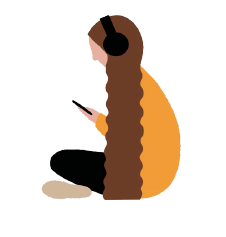“At The Little Psychology Company, our mission is to eradicate the barriers that delay or prevent children, educators, families and caregivers from accessing the support they need, when they need it”
Listening to the views of children and increasing the opportunity for participation in decision-making is a priority outlined by the SEND CoP and the Children and Families Act (2014). Despite this, there remains a dearth of methods available for children who are non-verbal, pre-verbal or who have emerging language. (Goldbart, Chadwick, & Buell, 2014).
Children with SEND are a heterogenic group and their unique communication patterns can pose challenges for those working with them, not only due to the nature of the communication, its validity and reliability, but also because attempting to simplify the medium of communication could lead to misinterpretation (Detheridge, 2000).

What does ‘voice of the child’ mean?
- A means of directing others’ attention, not only to where they are, but also to how they feel.
- A child’s voice can be a powerful event, sometimes heard by unintended hearers in the whole neighbourhood (Kupfer, 2011).
- Listening can allow others to recognise the child’s emotional states such as joy, curiosity, satisfaction, boredom, anger or despair (Harcourt, 2011).
- Voice is a basic means for directing others’ attention in a social situation and establishing an encounter.
- Metaphorically speaking, a child’s voice can represent the current landscape of childhood studies, such as children’s rights, participation, social inequality, perspectives, inclusivity and autonomy.
- Physiologically speaking, the meaning of voice relates to aspects of the anatomy that produce vocalisations and sounds.
How can children with difficulties in language and communication contribute their views?
Gaining understanding of the child through person-centred planning meetings, or completing a person-centred information document (e.g., Pupil Passport or All About Me) can help with planning communication approaches.
- Demographic information
- Details of the child’s needs
- What is important to them?
- What is important to keep them healthy and safe?
- What do others admire about them?
- What are their likes and dislikes?
- What makes them happy or sad?
- What are their preferred communication methods?
- How do others communicate with them?
- Where do they feel most comfortable/content/happy?
- Who are the important people in their life?
- What are their gifts, qualities, and skills?
- What are their self-care needs?
- What is the information about their learning in curriculum?
- What other agencies or services are involved?
Remember to consider the systems and people around the child when looking to develop methods of eliciting children’s voices:

Individual Child
- Knowledge of the child’s SEND contributes to their safety and wellbeing and informs methods of communication and interaction.
- Consideration of the physical, cognitive, language, sensory, social and emotional developmental stage of the child.
- Recognition of developed and emerging skills to differentiate the level of activity/communication appropriately.
Micro-system: looking at the child’s strengths and needs
- Shared understanding and a joint attentional frame can minimise communication barriers, as known communication partners can strengthen interpretations, predict behaviours and preferences.
Meso-System: communication partners are a great resource
- Multi-method approaches provide a range of opportunities and increase motivation to communicate and interact.
- Observation looks at theory in practice (‘what people actually do’) instead of espoused theory (‘what people say they do’).
- Increasing communication motivation through approaches used and the encouragement and praise given.
- Interactive technology can be added to the multi- methods accessible.
- A naturalistic play environment can minimise disruption and encourage child-led communication and participation.
- Using child-centred language, along with consistency and repetition.
- Using visuals, objects of reference or signing if required, increases understanding and responsiveness from the child.
Exo-System: supporting verbal language with visuals
- E.g. sign language, pictures, objects of reference, helps the child to process what is being communicated and also it is a sharing of strategies the child may adopt in their own communication.
Macro-System: a high level of staff collaboration
- Customising tools and approaches (e.g., interactive technology) can aid communication with children from diverse backgrounds and minimises cultural barriers.
Think about…
Increasing child participation by using:
- Joint attention
- Interpersonal support
- Providing opportunities
- Checking understanding/interpretation of communication
- Motivational activities
- Song and rhythm
- Technology
- Books
- Gesturing and body language
- Visuals, symbols and pictures
- SEND knowledge
Recording your observations of:
- Facial expressions
- Eye contact
- Pre-verbal vocalisations
- Gestures
- Symbol use
- Verbal vocalisations
- Imitating behaviour/noises
- Sign language and Makaton
- Eye gaze
- Objects of reference
- Body movements
- Termination and re-engagement with activities
- Time spent exploring the objects
- Rejection of, or disinterest in, objects
Using tools and methods:
- Choices board
- Objects of reference
- Visuals/pictures
- Picture Exchange System (PECS)
- Talking Mats
- Technology (iPad/buttons/eye gaze)
- Colouring and drawing activities
- Small world play
- Puppets and stories
- Emotional literacy

To purchase the checklist for your school please contact me, or look on our website (details below).

The Little Psychology Company
Welcome to a new way of accessing educational psychology.
Forget meeting thresholds, waiting lists and long referral forms. We provide an accessible, flexible and affordable service designed to meet the specific needs of your school.
samantha@thelittlepsychology.co
https://thelittlepsychology.co
Please login to view this content
Login